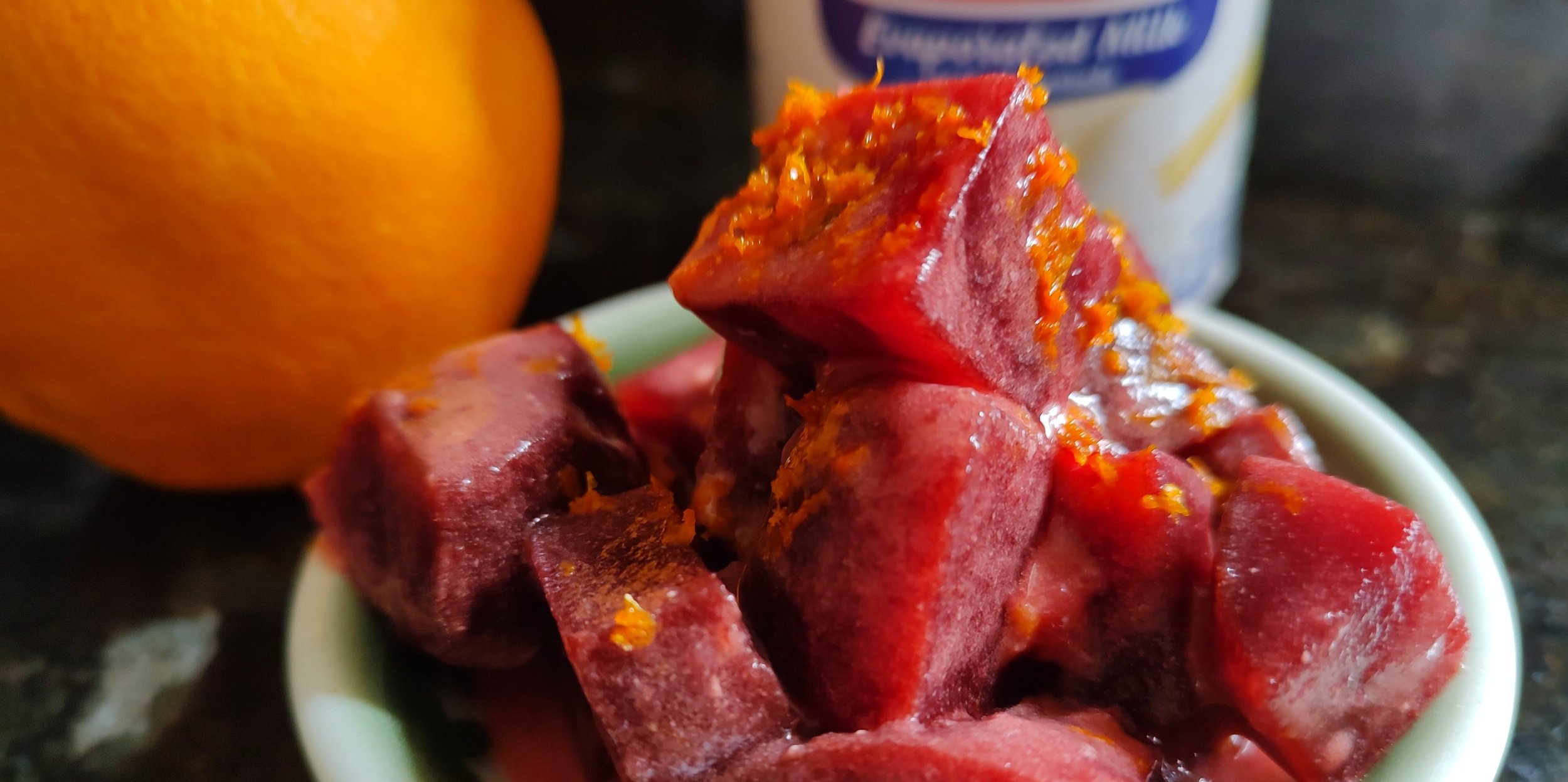Getting Vitamins in Wartime Winter Meals
JUMP TO RECIPE
Governments learned some key lessons from World War I. One was the need for rationing—it had not been practiced during the Great War and millions of people suffered from lack of food as a result. Another was the need to ensure citizens on the Home Front were getting all the nutrients needed to remain healthy. A sick population would be a weak and vulnerable one.
The end of winter was one of the more challenging times. Victory gardens didn’t have as great a variety of produce, and by this time other roots crops like potatoes would have likely been used up.
Thanks to rationing, people were able to have some egg and milk although quantities were severely limited in Europe. Homemakers had to be creative in ways most of us could not imagine. They became experts at substituting and combining ingredients in new ways. Two of the foods they turned to were evaporated milk and beets.
Nutritious Wartime Ingredient Stand-ins
Evaporated milk could be purchased with ration points and used to stretch the small milk allowance. As you can see in the 1945 advertisement below, nutrition was news. Vitamin G is the old name for riboflavin, or vitamin B2. Canned meats and milk were popular with homemakers because they added variety as well as quantity to everyday meals.
Beets were used in various ways. In the United States they were made into a variety of side dishes. In Britain they were a sandwich filling (as were long beans and other vegetables). They were also added to cakes to give a better color and add moisture. Beets are rich in fiber, protein, folate and antioxidants. They are especially good for heart health. But they star in their mineral content—manganese, copper, magnesium, potassium and iron.
Both the leaves and roots of beets are edible. The greens could be sauteed or used raw in salad. The roots could be roasted, boiled, grilled, pickled or eaten raw. At a point in the year when fresh vegetables were scarce, the versatility of beets was welcome.
A Simple Side Dish
I am sharing a recipe from a 1930 cookbook, Pet Recipes. It has more than 100 recipes using evaporated milk in breads, beverages, cakes and candies, main dishes, frostings, dressings and frozen desserts. Wartime homemakers might have pulled such a cookbook from the shelf to search for alternatives for favorite dishes.
The recipe here is for Beets in Orange Sauce. The ingredients are simple and the recipe is easy to make. It takes only about 10 minutes. During World War II some homemakers would not have picked beets as their first choice simply because they required long cooking. Grocers helped with this by preparing large pots of beets on Saturday afternoons, and then removing the skins on Sundays once the beets had cooled. Shoppers could then purchase beets ready to add to whatever recipe they wanted.
I have kept the same spirit by using ready-to-eat beets. If you can find something similar to what is pictured here, you can have your beets ready in only a minute or two. This package was the perfect amount for the sauce, which needed only one orange, making this a simple and fairly economical dish. The orange adds to its overall nutrition with vitamins C and B6, potassium, fiber and magnesium. The orange zest adds polyphenols. Overall, Beets in Orange Sauce would have been a perfect wartime option for a filling and nutritious meal.

Beets in Orange Sauce
A very quick and easy recipe using simple ingredients, that adds up to a highly nutritious--and tasty--side dish.
Ingredients
Instructions
- Melt butter, stir in the flour and slowly add the beet liquid.
- Add orange juice and rind, salt, pepper and sugar. Cook stirring constantly, until thick and smooth.
- Scald milk. Remove from fire and add slowly the orange juice mixture, stirring constantly.
- Add hot beets and serve immediately.
References
Pet Milk Company, Pet Recipes. St. Louis, MO: Willett Lithographing Company, 1930.
Evaporated Milk Advertisement. Woman’s Day, March 1945, New York, NY: Stores Publishing Company, Inc.
The Scripture verse in this post is from the March 1945 Woman’s Day.
“And other sheep I have, which are not of this fold: them also I must bring, and they shall hear My voice; and there shall be one fold, and one shepherd.”
John 10:16




